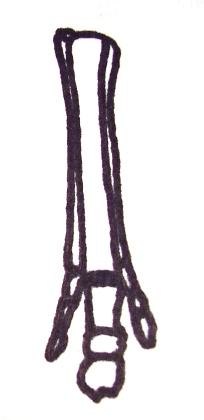
Forelimb of Mesohippus
Modified from MacFadden 1992.
The Oligocene
saw the appearance of horses with three toes on each foot (Draper 1996),
and while some groups of Equidae retained the digitigrade
method of walking, this epoch also saw the development of unguligrade limbs in some lineages of Equidae (Azzaroli
1992). Because the members of Equidae were still found mainly in the northern
hemisphere during this epoch, the glaciation did not have a profound effect
on the family. However, there was a general trend toward increased
size during this epoch (Draper 1996), possibly to increase speed to escape
from predators in the more open woodlands that appeared during this time.
